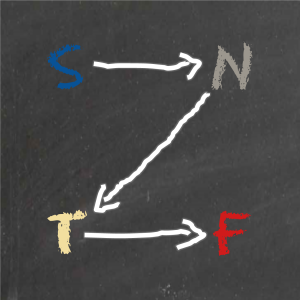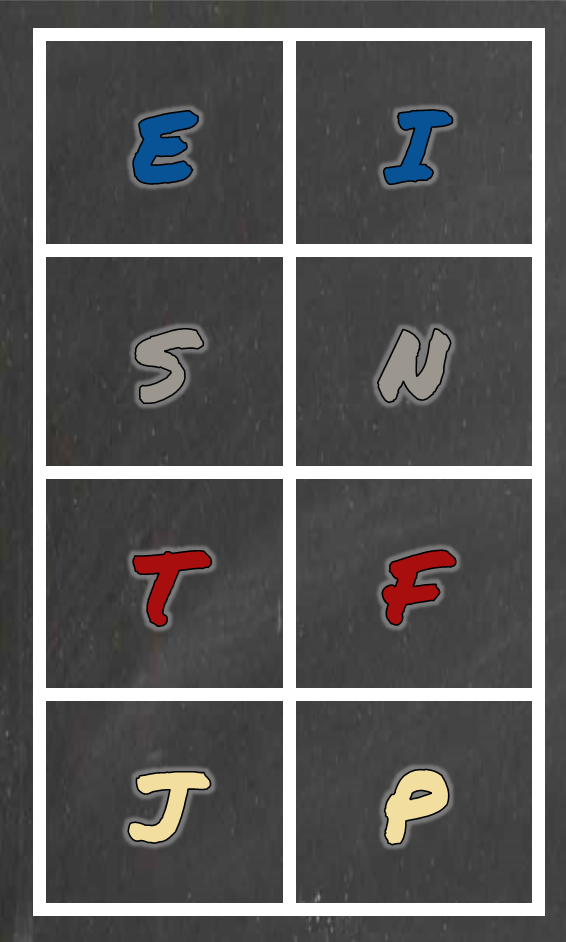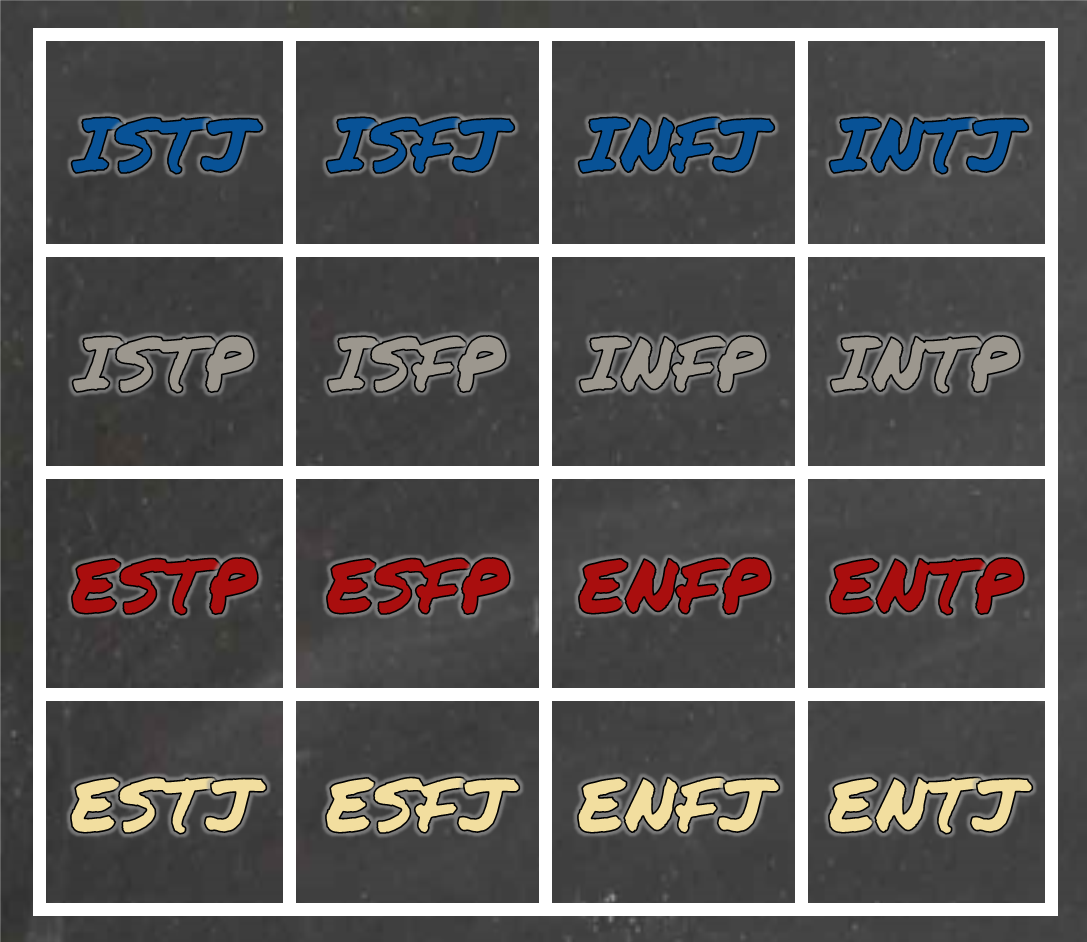
 If you stop to think about it, life is essentially made up of millions of decisions that range in importance from what we eat for one meal to whom we should marry. Many decisions are made with almost no thought, such as whether to put the chip bag down or keep eating, and some decisions, like choosing a life long career, may inspire years of painstaking research.
If you stop to think about it, life is essentially made up of millions of decisions that range in importance from what we eat for one meal to whom we should marry. Many decisions are made with almost no thought, such as whether to put the chip bag down or keep eating, and some decisions, like choosing a life long career, may inspire years of painstaking research.
Essentially, no matter the size or importance, the decision making process consists of gathering information, weighing the information to make a choice, and pulling the trigger. Interestingly enough, the middle two letters, or function pairs, of each Myers-Briggs® type describe our most comfortable methods for gathering and prioritizing information. With that being the case, it only makes sense that knowledge of type could be harnessed to make better decisions.
One way that the power of the MBTI® can be used to make better decisions is known as the zig-zag method. The concept of the zig-zag method came from none other than Isabel Briggs-Myers, and it was fleshed out by Gordon Lawrence. Of course, the name of the process comes from how it is modeled (shown above). The method shows individuals how to systematically use all four functions of type to make the most thorough and well-rounded decisions possible, and it can be used by individuals of all types.
While the four steps below may seem like a long process for small decisions, practicing the process with decisions of all shapes, varieties, and sizes can cause it to become second nature. Steps 1 and 2 will help you gather the necessary information, while steps 3 and 4 will help you narrow the information into a good decision.
Step 1: Sensing
To begin the decision making process, use Sensing to gather concrete facts, data, and details about the realities of the here and now by asking the following questions.
- Have you been in a situation similar to this before? If not, who has been through it successfully? If so, how did the process go previously and what can you keep the same and change?
- What position are you currently in, and how does that factor into the decision?
- What are your current strengths and weaknesses, and how do they relate to the decision?
- What are the outside factors and details that play a part in this situation at the current time?
Step 2: Intuition
Next, use Intuition to explore possibilities for the future, connections, and the big picture of the decision making process, by asking these questions.
- While trying to think outside the box and avoid using a filter to eliminate any ideas, what are all of the possibilities for the decision, even those that seem unreasonable?
- What connections do the possibilities have to each other and to different parts of you? Do they have a common theme, or all relate to certain values you hold? Do they lean in any particular direction?
- What have you overlooked in previous decisions? Do you tend to avoid certain areas out of fear or for other reasons?
- How will the possible decisions impact the future and growth?
Step 3: Thinking
After gathering the necessary information, Thinking will help you examine the information in an objective way, by asking the following questions.
- If an acquaintance were trying to make this decision, and you were looking at the information as an outsider, what would you advise the acquaintance to do? Or, what would you think that person should do?
- What are the pros and cons of deciding in each way? Which side has the most pros, and which has the most cons?
- If one of your preconceived notions about the decision is proven wrong, are you open to changing the decision accordingly?
- If you place more weight on logical data that relationships, which decision makes the most sense? Is this enough to sway your decision in a particular direction?
Step 4: Feeling
Finally, look at Feeling to examine how each decision fits with your values, impacts relationships and people, and how much weight each possibility carries for you, personally. Use these questions to assist.
- What is most important to you? Maybe your pro/con lists have equal numbers, but do some pros and cons outweigh others?
- How do the possible outcomes fit into your values and life?
- How do you feel about each possible outcome, and how do you believe you would feel about each after the fact? Sad? Nervous? Happy? Does anything “click”?
- How would each possibility impact people close to you?
As you read through this process, you may have wondered how your own type plays into this process. If you apply type dynamics to the process, it makes sense that the questions related to your dominant preference will be easiest to answer, while the questions related to your inferior preference may be difficult to answer. That is perfectly natural, and it should not deter you from trying the zig-zag method. If you find that you have trouble examining areas related to your non-preferred functions, try talking the decision making process out with a friend who has different preferred functions than you have. This may help you gain insight, especially when deciding on something big and important.
If you would like to read more about practical applications of the zig-zag method, there are numerous books that utilize and discuss this tool! When making career decisions, try Looking at Type® Your Career by Charles Martin, Ph.D.. For more general information on decision making, check out Introduction to Type and Decision Making by Elizabeth Hirsh and Katherine Hirsh.
As always, thanks for reading. Look for more information on decision making in the coming weeks!



This is very useful info. Thanks for sharing. I think most of us will be drawn more to a particular step.
Anyway, that’s a whole lot of steps to go through if I’m doing this when I need to decide “What to eat for lunch?”
I agree that it’s too much to go through for lunch…. I meant that part as a bit of a joke. 🙂 I also agree that different types are drawn to certain steps. That being said, this is a great way to look at big decisions from different angles. Think career choice, home buying, how many kids to have, etc. Thanks for reading and commenting!
Pingback: INFJ | Personality Playbook | Irene's
Pingback: Fridays @ Five (July 7, 2017) – Personality Type and Personal Growth | Personality Hacker
Amazing information!!!!!! This helped me to make a major decision in my life!!!!!! Thank you soooo much for sharing!!!!!!!
As an ESFJ and a Highly Sensitive Person (HSP), at the age of 10, my parents divorce put my life into unexplained, suppressed, reactive, chaotic, uncertainty in between a state of “fight or flight”, the “parent” to my 5 year old sister, and “responsible, supportive, wife” to my mother, and the “protective, extrovert” that was thrust into roles but unequipped to know if anyone, including myself, had a clue there was so much more to ME than the role of an actor going through an unscripted, misdirected, no venue, “freak show”, where the audience always returned just long enough to criticize the star that lost the ability to shine, because the beautiful brilliance was lost in a black hole. Until recently, black holes were a theoretical, probability, and very few believed in and even less could explain. Black is the absence of color or light, a hole in what is already nothingness, a completely empty space.
“the black void of space”. There’s nothing in a void . It took one person, who preserved, through years of observation, with equipment that captured finite details, who saw the “anomaly”, the outlier. Seekers, with a keen eye for seeing, while everyone else is staring through a looking glass. The one difference of those staring into space and the one seeker is the ability to focus on the subtleties of the void. Obviously others looked at the same thing but only saw the void and are looking for a hole. Change the thought process and redefine “void”. Nothing is completely empty if you understand the mindset that everything exists and is made of matter. So, if everything has matter, look into the black space void and find it’s lost matter. It’s there, I know, because a hole is missing what made it whole. It lost it’s matter, too. I’m now 52 and am the only one alive in my family. In 5 years, everything that made me whole and gave me a purpose, is gone. The hole, oh it’s there. There’s a part of my matter that is lost. I look no different on the outside to strangers, it’s only seen by those who see me. I feel it and the pain, That’s the matter. The one absolute core trait of an EFSJ is family and love is life’s happiness. I never quit and learning who I am is what I’m working on. It’s a work in progress but I like me so that’s a start.